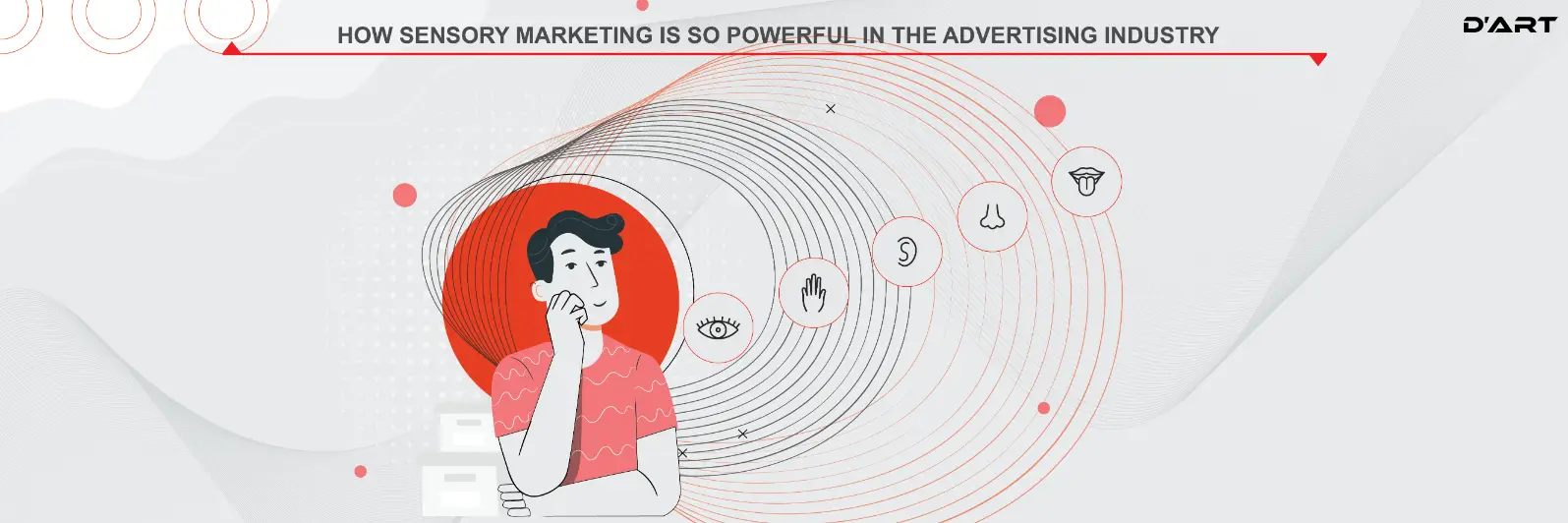HOW SENSORY MARKETING IS SO POWERFUL IN THE ADVERTISING INDUSTRY

“it’s a spring evening and you just went out to take a peaceful walk by the nearest city center. Locking that heavy iron gate of the house was a task though. But managing it by a tactic, you just stepped the street and start walking the center. The breeze hit the nostalgic nerve and the childhood memories of baking fresh bread in the kitchen on fine Sundays refreshed the soul. That sweetly cold breeze was filled with the aroma of fresh bread, and prolly it was from the nearby bakery’s billboard. I just went and saw, how a billboard can fuse out that aroma. There was a diffuser at the top and bottom of the billboard, and was fusing out the aroma to evoke the sense.”
The recall value, that’s it. Evoking senses and touching the remembrance nerve at every point. There’s a brain behind it that has mapped out the psychology and the sensory science to make a brand mark in the cerebrum. The fact here is that how marketing and advertising are co-related with each other and human senses fill the missing links.
If you do not, get aware of neuromarketing. Now let’s take a memory walkthrough advertisement road that hold a special space in our hearts. Getting hooked by an advertisement is a thing you just can’t miss, even voluntarily. The catchy music, lyrics, and dialogues create a solid brand perception. Every time the ad gets played, we reminisce the time we first heard it and immediately recognize the brand.
As per Hulten (2011), a multi-sensory brand experience supports individual value creation and refers to how individuals react when a firm interacts and supports their purchase and consumption processes through the involvement of the five human senses in generating customer value, experiences, and brand as an image.
The illustration above helps us find a sweet spot amongst various senses and the experiences catered through them. Thus, sensory experience.
IMAGERY
To make an advertisement effective, determinants like visual aesthetics have been sought for a long time now. As discussed earlier in this blog, the visuals ultimately lead to spontaneous imagery in the viewer's mind. Stimulus orientation and perceived movement are the factors affecting the imagery generated. Plus, when evaluating the insights from the ad, the content of the images and their perception formed to create a better understanding.
The simulation can be auditory, olfactory, or gustative. The master plan is to route the advertisement from these senses to the cerebrum of the viewer. In the case of radio ads, the power of storytelling is gelled with the power of sensory marketing. For decades, they have aced the art of storytelling in form of audio skits, spoken words, podcasts, interviews, etc. It’s all communicative. The back-and-forth conversation has hooked listeners to the jockeys presenting them.
Plus, brands today are very lucrative about creating a retail experience rich with sensory marketing to engage their consumers and narrative their side of narrative to consumers in best possible manner.
*Reference - Hultén, B. (2011). Sensory marketing: the multi-sensory brand-experience concept. European Business Review, 23(3), 256-273.